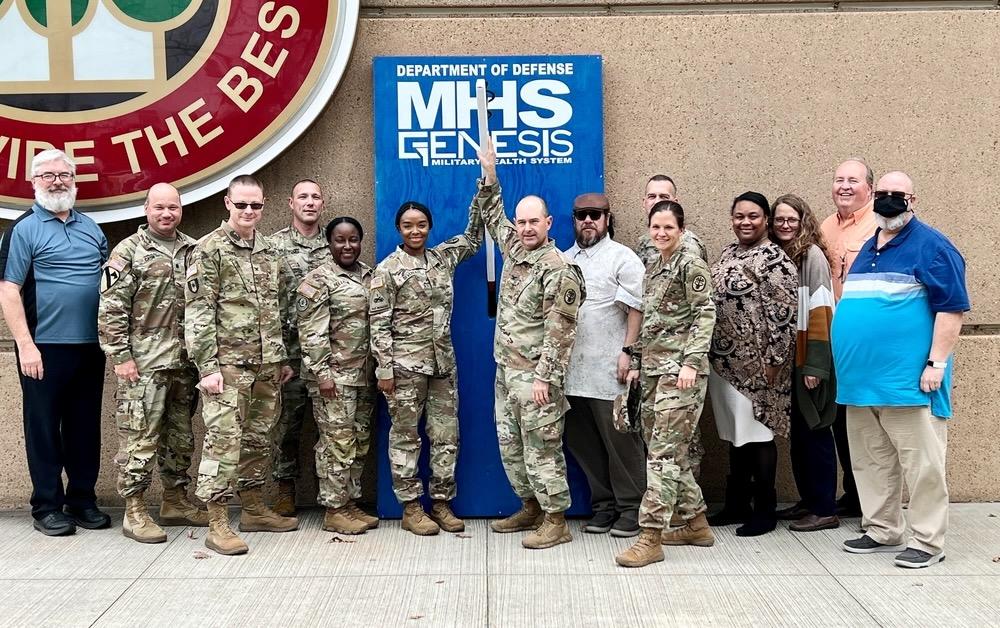Nurturing Enterprise Medical Solutions for Tomorrow
Creating medical information technology to support 9 million possible product users, process 25,000 requisitions, track more than $13 million in medical supplies and pharmaceuticals a day, and provide a platform for medical appointments and documentation of clinical data is a great challenge. At the Defense Health Agency, the 10-year-old combat support agency, the responsibility of developing digital solutions falls to the Solution Delivery Division, or SDD.
The SDD provides information and technology, simulation and acquisition program management for the agency, leveraging innovation, an acquisition-trained workforce and a business-oriented mindset to drive continuous optimization, cost reduction and modernization, said Col. Marcus Moss, USA, division chief of the Solution Delivery Division (SDD), in the Program Executive Office for Medical Systems of the Chief Information Officer (J-6), Defense Health Agency.
The division has created scores of tools and is now looking at solutions from an enterprise-wide perspective focused on the end user.
“When we talk about creating technology, it is [around] the Defense Health Agency’s strategy and the J-6’s six priorities, and it is to anticipate and respond to customer priorities,” said Col. Moss. “We create medical information and information technology solutions based on the needs and requirements of our customers.”
The SDD’s structured process includes requirements gathering, project scoping and, naturally, allocation of resources, followed by the outlining of user-friendly interfaces and experiences. Those efforts are followed by agile development with iterative processes, continuous feedback loops and adaptation to changing requirements. Given its emphasis on user experience, the SDD also conducts quality assurance and, after deployment of solutions, looks at performance, maintenance, and the compliance and continued security of the systems, the colonel explained.
In one of its key partnerships, the SDD and the Military Health System are working with the U.S. Department of Veterans Affairs to facilitate the Enterprise Clinical Imaging Archive, a medical imagery repository used by the Defense Health Agency and Veterans Affairs medical teams worldwide to view and store radiology, cardiology and ophthalmology images. The platform uses the so-called NilRead tool, a web-based, no-installation diagnostic viewer that allows physicians to interactively examine and share 2D, multiplanar reconstruction imaging, 3D, multimodal image fusion and other types of imagery.
Because the new platform provides centralized management and storage for all medical images, the single system of record is streamlining and improving care. “For me, it is very important being a service member because I have some equity in this game,” Col. Moss noted. “For service members who are leaving the military, we want to make sure that they have a seamless transition from the MHS [Military Health System] to the VA [Veterans Affairs] health care system. And the ECIA [Enterprise Clinical Imaging Archive] stores content from beneficiaries’ title identities through retirement.”
Another system—on which they also provide updates to Congress in addition to the Enterprise Clinical Imaging Archive—is the Individual Longitudinal Exposure Record. It is a web-based application for the Department of Defense and Veterans Affairs to track known exposures to service members, civilians and veterans across time.
The Individual Longitudinal Exposure Record pulls in data from the legacy Defense, Occupational and Environmental Health Readiness System-Industrial Hygiene system that manages health risk data and actively tracks biological, chemical and ergonomic hazards globally for military and civilian personnel. With this link to the legacy system, the Individual Longitudinal Exposure Record is helping to ensure efficient and effective continuity of individualized health care regarding exposure risks, Col. Moss said.
“It provides a complete electronic historical exposure record that documents service members’ occupational environmental health exposures over the course of their career,” he said. “Today, I can go in and request an account to ILER [Individual Longitudinal Exposure Record] and put in my deployments, and I will get an output of hazards that have been seen at the places where I’ve deployed … and what I could have been exposed to at that time. The thing now is getting the word out to everyone that ILER is a tool that you have access to, especially if you have been deployed and you have symptoms that you can’t necessarily identify the cause of.”
In addition, the SDD is partnering with the Veterans Affairs for the Joint Patient Safety Reporting System that integrates patient safety data from the Defense Health Agency with data from the Veterans Affairs’ National Center for Patient Safety. It pulls the data into a single system for quarantine and comparative data analysis. “It allows their respective medical teams to identify and document medical errors, near misses, close calls, things of that nature,” explained Col. Moss.
We’ve embraced the standardization of applications and systems across the enterprise, including adopting a platform-centric approach.
However, the SDD’s major effort is supporting Director of the Defense Health Agency Lt. Gen. Telita Crosland’s “Digital Front Door” strategy, the colonel said. Designed to be an opening to the agency’s growing virtual health ecosystem, the program allows patients to use their own devices as part of a mobile or at-home health suite that provides features such as self-service prescription refills and appointment scheduling, secure patient-provider communications and lab results, automatic, systematic gathering of patient-generated health data from applications and wearables, visual displays and dashboards to record symptoms and track trends, and 24/7 patient access to and control of health information, according to the agency.
The Digital Front Door strategy is part of the agency’s effort to provide an agile, data-driven, fully integrated, virtual-first, human-centered model of care. The Defense Health Agency is rolling out the concept at five sites this spring, according to the agency.
“The Digital Front Door, that is the big-ticket item that everybody’s focused on now,” Col. Moss shared. The SDD’s Technical Support Branch is the main office working on the beginnings of the program, laying out the technical and functional requirements to support with weekly meetings and briefings to Director Crosland. “We are really just working hard to get the technical issues laid out,” Col. Moss acknowledged. “In the past, a lot of solutions that we created were siloed solutions, and we had a lot of systems that didn’t necessarily effectively communicate with one another. Now, SDD develops enterprise solutions. We’ve embraced the standardization of applications and systems across the enterprise, including adopting a platform-centric approach.”
As part of that, the division is also leveraging a low-code or no-code approach for application development and configuration, and already, the decreased code requirements are saving “some time” and costs.
For identity, credential and access management, the common access card still remains central to the solutions that the SDD builds, Col. Moss confirmed. “We use our CAC [common access card] for everything now,” he stated. “[You use it when you try to go through the gate, when you get your prescriptions at the pharmacy, when you sign in for an appointment with your primary care physician.” This Identity Identification System is a component of the agency’s Identity Credential and Access Management System, a shared solution that drives the authentication capabilities for more than 50 Military Health System applications.
And as the SDD and the Defense Health Agency progress in their digital first efforts, officials will continue to interact with industry to leverage emerging and other advanced technologies, the colonel noted. “Our engagement with commercial entities is typically in the form of Industry Days,” he said. “And we have a couple of conferences that we are attending this summer.”
For the colonel, it is all about supporting the agency’s strategy and rapidly implementing new and emerging technologies to improve the delivery of health care, but at the necessary speed and scale required by such a large mission.






Comments